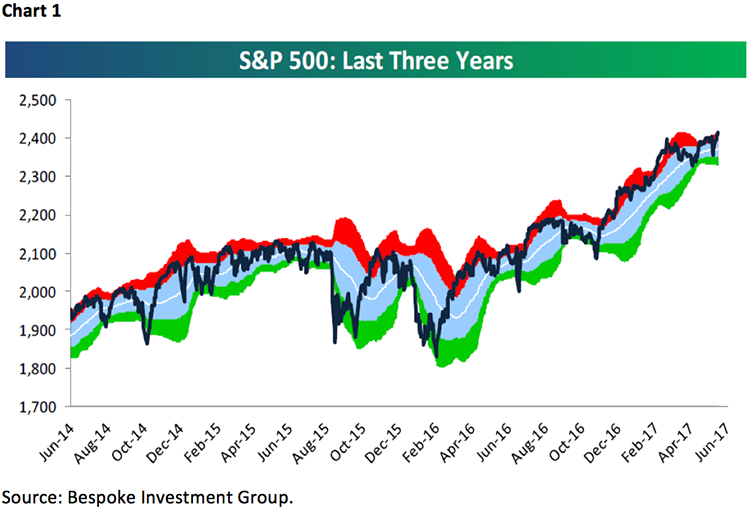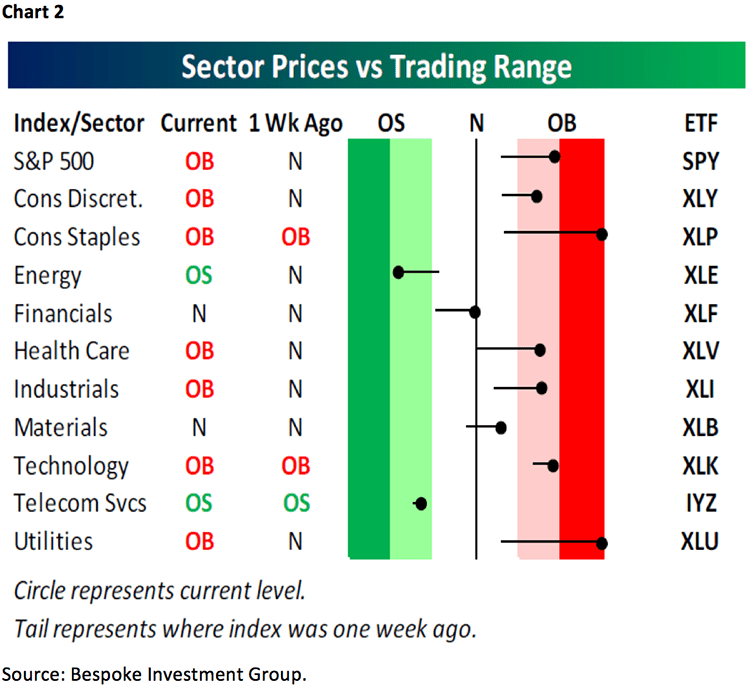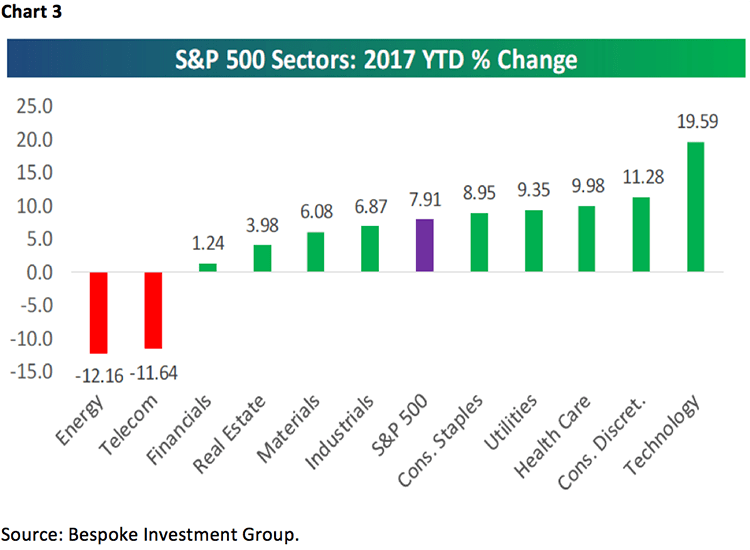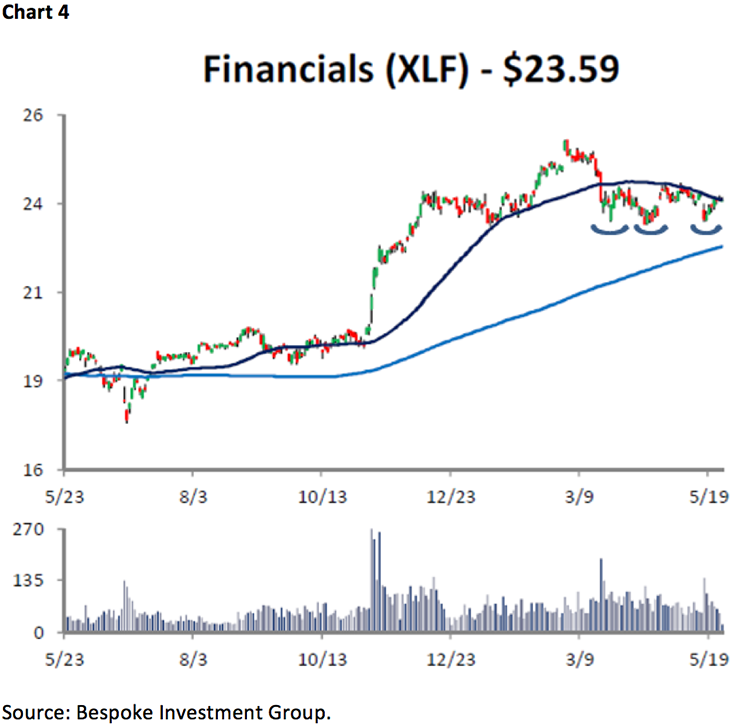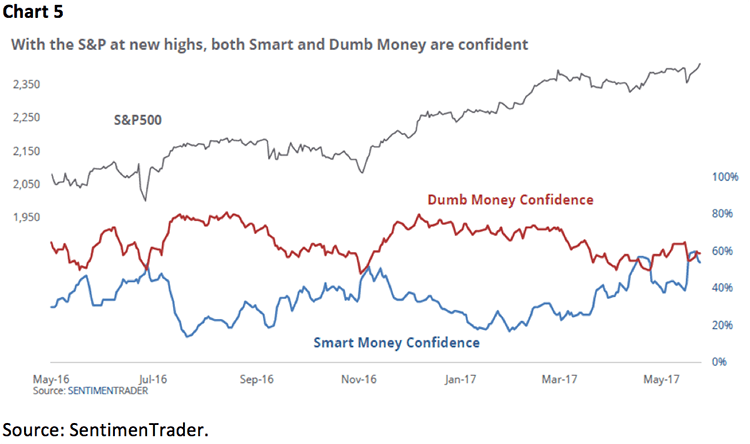Shrugging off bad news!
by Jeffrey Saut, Chief Investment Strategist, Raymond James
For the College Humor Magazine I submitted a collection of many “Laws” and other items, including my “College Course Descriptions”: 1) If it’s green, wiggles or slithers, it’s biology; 2) If it stinks, it’s probably chemistry, but don’t rule out economics; 3) If it doesn’t work, it’s most likely physics – but keep the economics option open; 4) If it is incomprehensible, it’s probably mathematics, but that’s part of economics also; 5) If it stinks, doesn’t work, is incomprehensible and doesn’t make sense – it’s either economics or philosophy.
. . . Ray DeVoe, analyst and author of “The DeVoe Report”
Raymond DeVoe was one of the best stock market newsletter writers on Wall Street. I had the pleasure of meeting him when I moved to Baltimore to be director of research and run capital markets for a brokerage firm. Unfortunately, Ray is no longer with us, having passed away. As written in his obituary:
Tom Keene on Bloomberg Television’s, “Surveillance Midday,” called him a “legend of Wall Street.” DeVoe wrote the weekly “DeVoe Report” for 35 years and continued until August. The newsletter was known for DeVoe’s original thinking on economics, his humor and his wide-ranging interests. He often discussed classic movies along with stocks. The financial website “Global Province,” named The DeVoe Report “The Best Wall Street newsletter” in 2004.
I recalled this “College Course Descriptions” while reading last week’s moribund economic releases. As our economist Scott J. Brown, Ph.D., writes:
The 2nd estimate of 1Q17 GDP growth was stronger than anticipated, not a big surprise given the normal uncertainty in the figures. Consumer spending was revised a bit higher (still soft). Business fixed investment was revised higher. Inventories were more of a drag on the headline figure than in the advance estimate. Underlying domestic demand (Private Domestic Final Purchases, which is GDP less net exports and the change in inventories) was revised higher (a 2.7% annual rate and +2.9% y/y). A pop in military aircraft prevented durable goods orders from falling as expected, but ex-transportation, results were disappointing. Orders and shipments of nondefense capital goods ex-aircraft appear to be on soft trends into 2Q17, suggesting that the 1Q17 pickup in business fixed investment (+11.4%) may be a one-off.
To be sure, U.S. economic data has been disappointing for a while, yet the equity markets continue to shrug off bad news. That action reminded me of one of legendary strategist Bob Farrell’s favorite books “One Way Pockets,” first published in 1917 under the nom de plume of Don Guyon. I like this quip:
Most traders (investors) seem to become convinced of the genuineness of a movement in either direction only when it approaches a culmination. One reliable indication of the start of an upward swing is afforded when, after a period of decline prices, or less frequently, dullness, the market advances or refuses to go down following the receipt of bad news. News can seldom be utilized by the public for market purposes, even when its authenticity is beyond question. For instance, if tomorrow morning’s newspaper should announce the death of a President or the failure of a great “corner house,” or the complete destruction of Gary, Indiana, it is more likely that stocks sold on the news would bring the lowest prices of the day, for the very good reason that each seller would be competing with thousands of other sellers who would have learned the news at the same time.
Indeed, shrugging off bad news, what a novel concept, and for the equity markets it seems to have been the case for quite a while. It certainly was the case last week as the D-J Industrials (INDU/21080.28) rallied 1.3% (to within 35.27 points of its all-time high), the S&P 500 (SPX/2415.82) rose 1.4% (to a new all-time high), and the Nasdaq Composite gained 2.1% also to a new all-time high. Such action caused one old Wall Street wag to comment, “When markets ignore bad news that’s good news!”
That said, Andrew and I think the equity markets are making a short-term peak. That’s what our short-term proprietary model is “thinking” as well. However, we are not looking for much downside traction, but rather more of an upside stall for the next few weeks while the stock market’s internal energy is rebuilt. If there is a downside, headline induced, shock, we believe it will be short-lived with stocks quickly rallying back.
Also arguing for a “stall” is the fact that many of the major indices are at the top of their various channels (see Chart 1 on page 3). Additionally, most of the sectors are pretty overbought in the short term (Chart 2 on page 3). It is interesting to note the performance of those macro sectors year-to-date (see Chart 3 on page 4). Notice that Energy and Telecom have lagged badly, and that Financials are virtually flat for the year. Recently the Financial ETF (XLF/$23.60) has traced-out a head-and-shoulders bottom, which could also be construed to be a spread triple-bottom, and is attempting to vault above its 50-day moving average (Chart 4). As the article in today’s Barron’s states, “It’s Time to Pounce on Banks”; to which we add, only if you pick you banks carefully. A good starting place would be the Raymond James Equity Research universe of stocks rated Strong Buy by our fundamental analysts.
The call for this week: As stated, we are looking for an “upside stall” with no real downside traction unless there is a headline induced “shock.” Our friend, and founder of the insightful SentimenTrader organization (Jason Goepfert), is kind of looking for a short-term stall as well as he writes:
When stocks took a brief spill last week, the smart money quickly stepped in and started buying. They haven't let up too much over the past week, which isn't too unusual. What is unusual is that the dumb money is right there alongside them. Both groups are now relatively confident in a further rally, and that's not something we often see. That's especially the case when stocks are ticking at new highs. The "smart" and "dumb" monikers are just shorthand to depict groups of indicators that tend to be non-contrary (smart) or contrary (dumb) when they reach extremes. Almost by definition, the "dumb" money will be on the right side of the meat of a trend, and that's how some prefer to use it – as a kind of trend-following model. That's fine until it reaches extreme optimism, then the likelihood of a further sustained rally diminishes. Smart money acts more like hedgers, buying into declines and selling into rallies. That's why it's so odd to see both groups at essentially the same confidence level, and the S&P at a new high. [see Chart 5 on page 5.]
Bear in mind that this “stall call” is just a short-term trading finesse call because longer term we remain in a secular bull market that has years left to run! And then there was this, about the balance of 2017’s stock market trading pattern, from LPL’s eagle-eyed Ryan Detrick (as paraphrased):
The S&P 500 has gained 7.9% through [last] Thursday, the 100th trading day of 2017. Since 1950 the S&P 500 has never finished lower after gaining at least 7.5% during the first 100 trading days – it’s 23 for 23. And on 20 of these occasions, the benchmark continued to rise, with an average gain of 9% over the remainder of the year.
Ladies and gentlemen, if correct that would imply a gain for the SPX of some 16.9% for the year (7.9% + 9.0% = 16.9%), which is considerably better than the +13.1% the SPX on average has returned as the stock market has transitioned from an interest rate, to an earnings, driven secular bull market . . . QED.
Copyright © Raymond James






